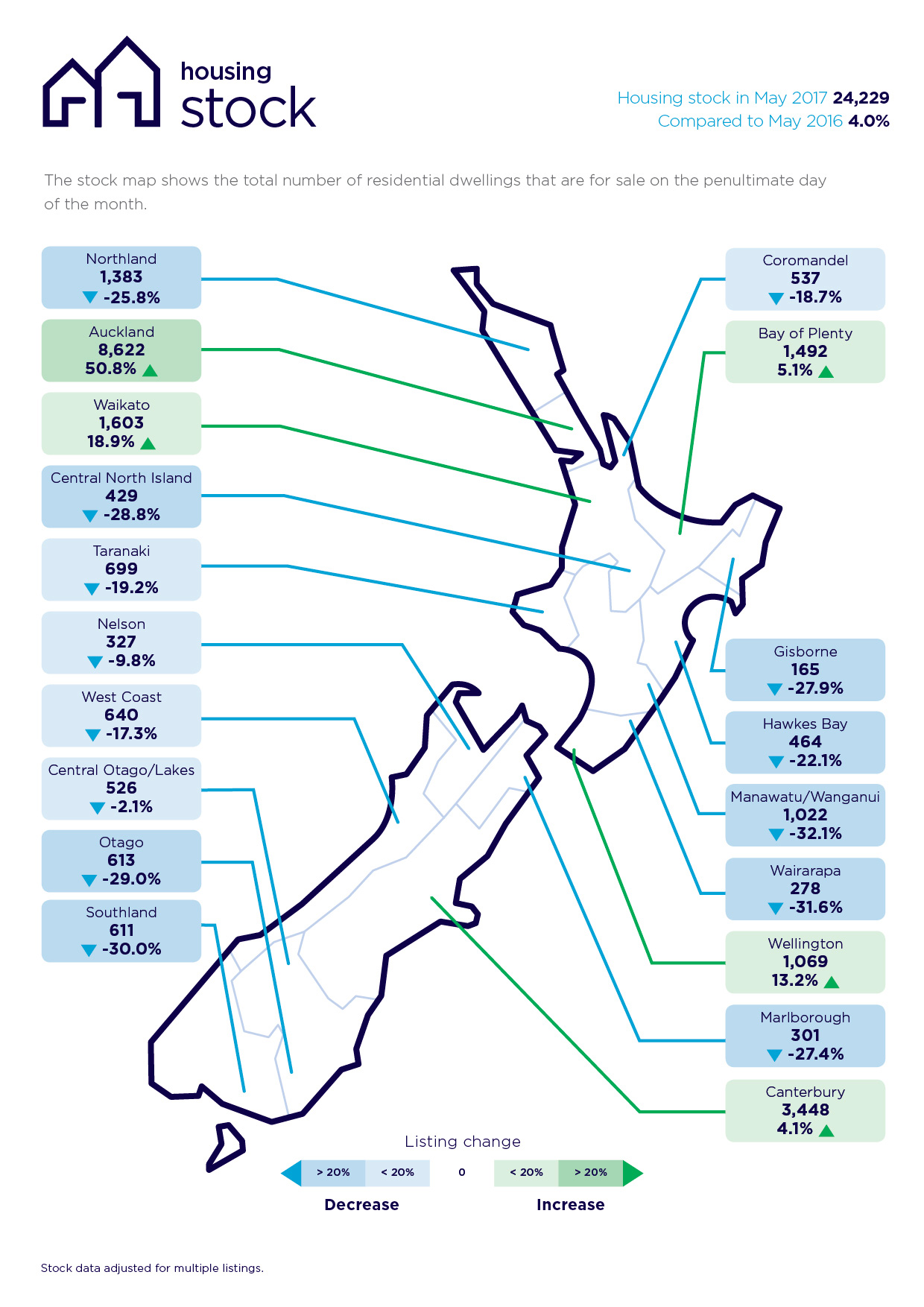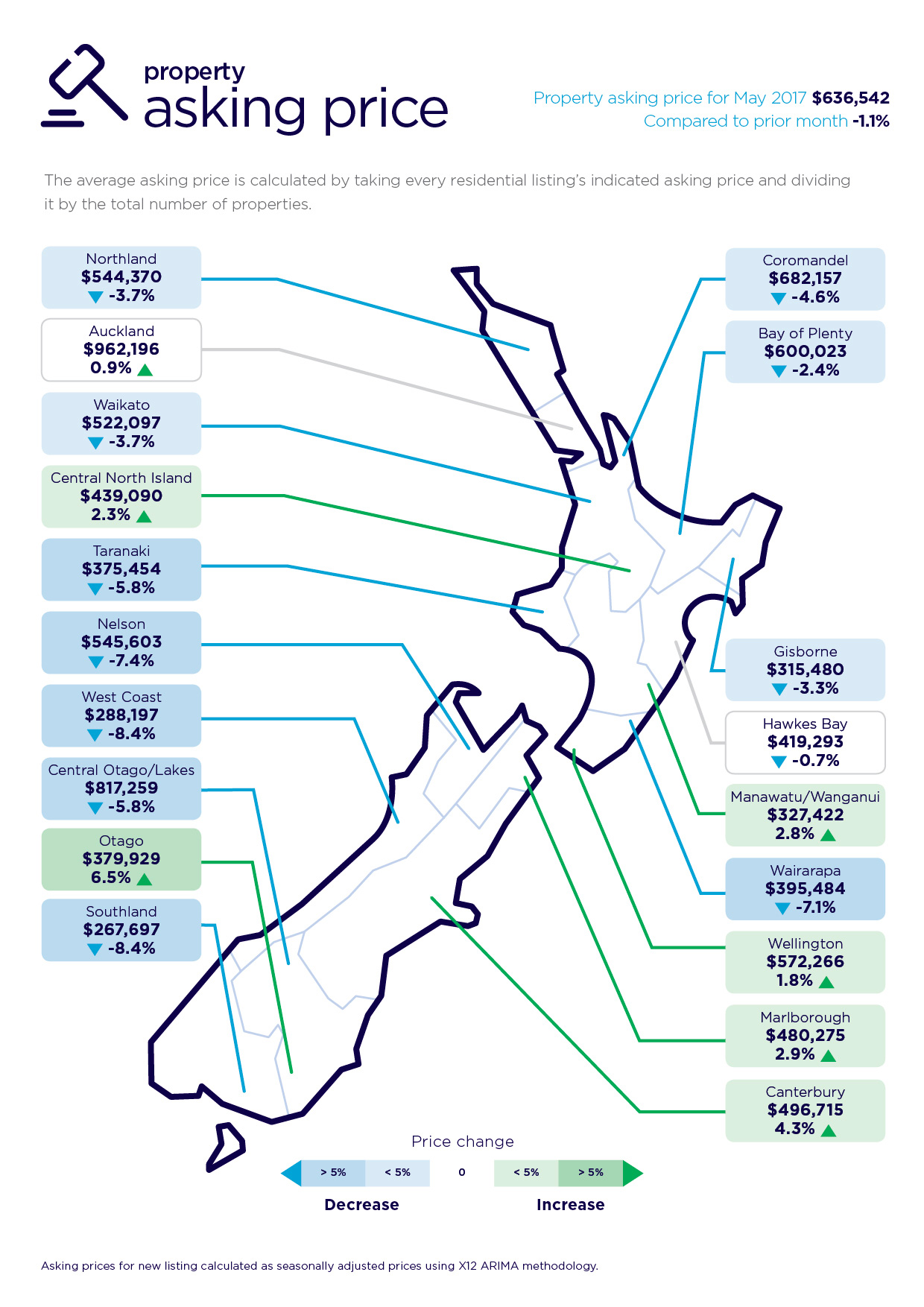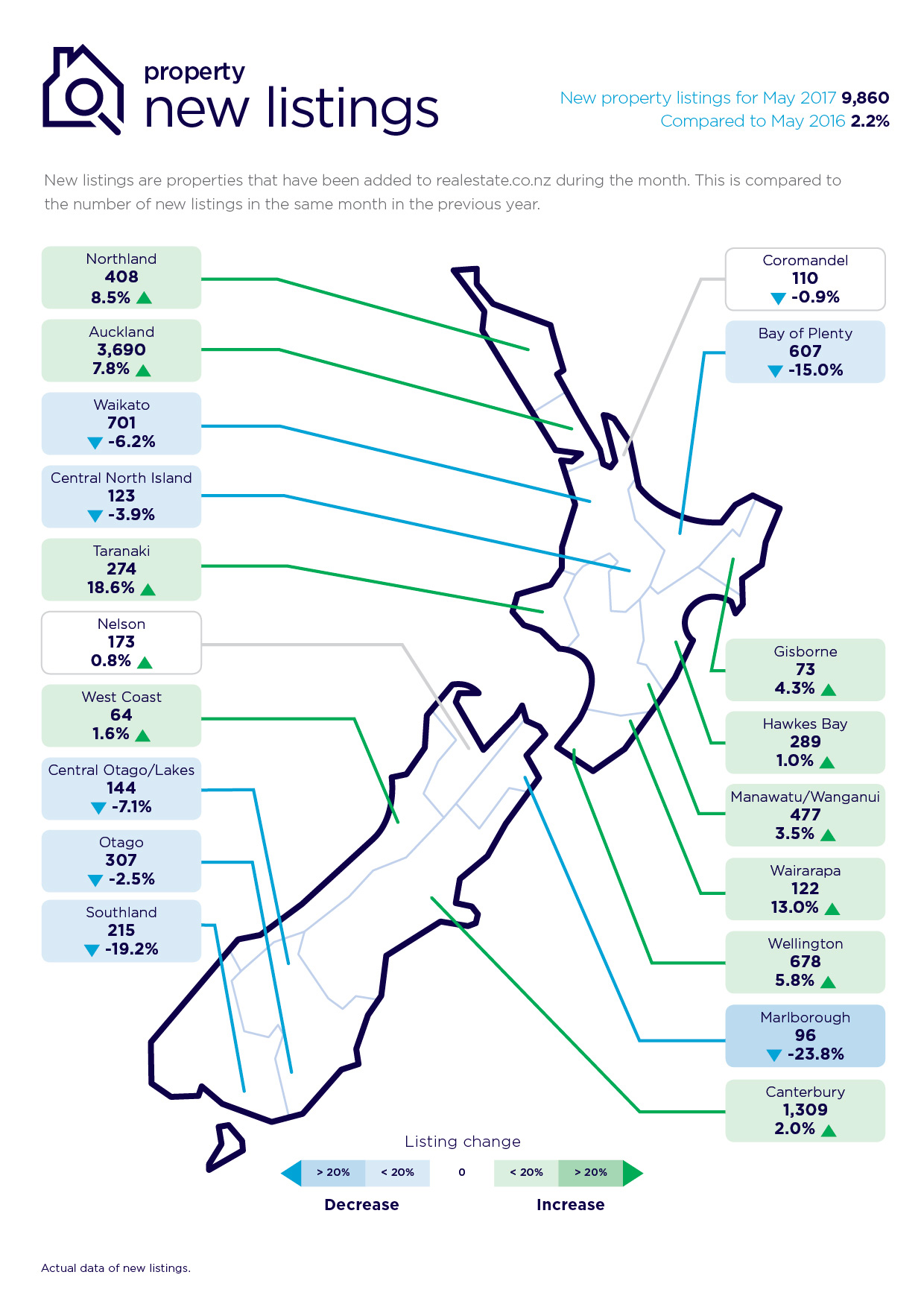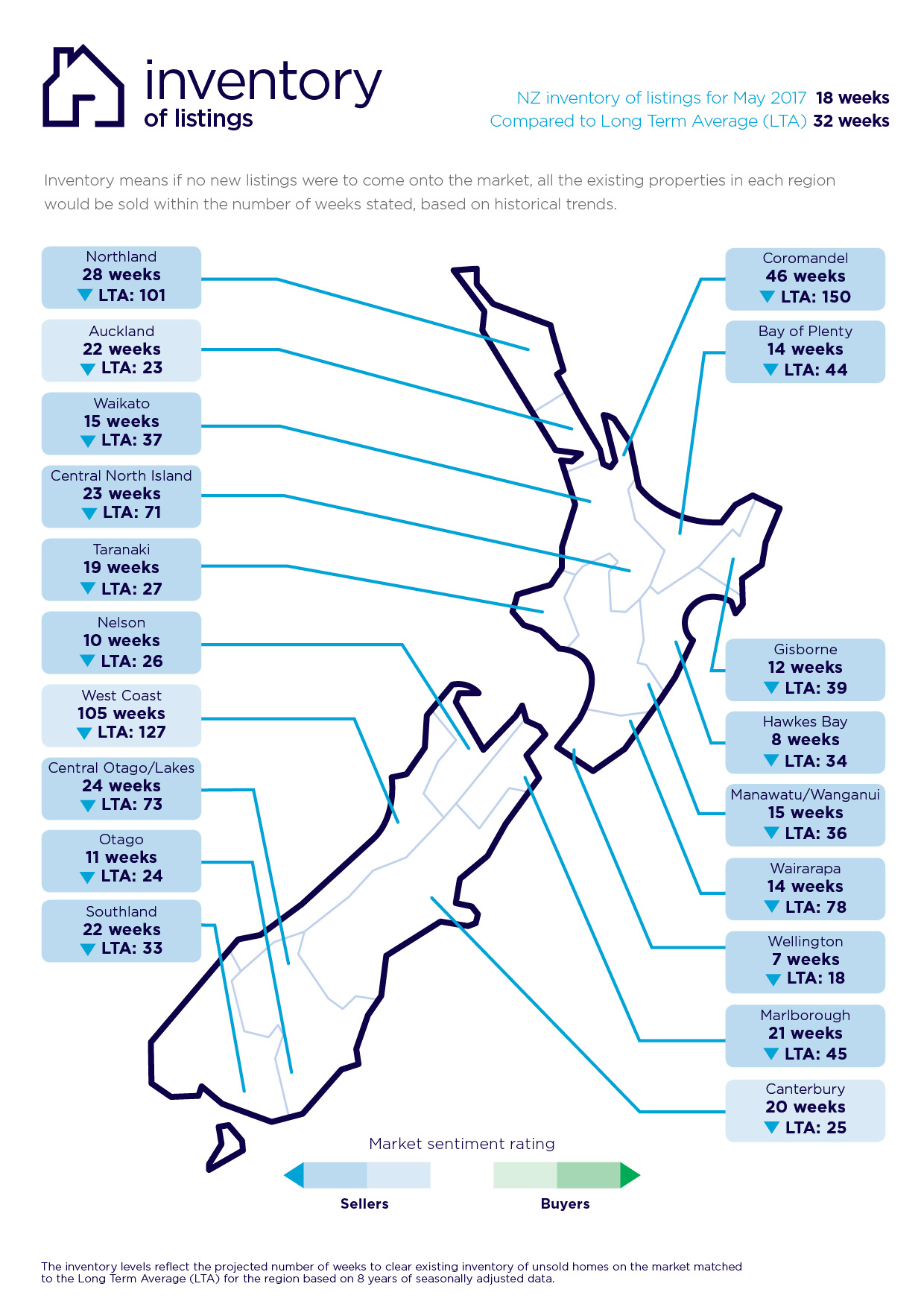Download the New Zealand Property Report as a print-ready PDF.
Increased housing stock breathes new life into Auckland property market
- Total number of properties for sale up 50.8% -
An increase in the total number of residential properties available for purchase in Auckland is good news for home buyers.
Real time data from realestate.co.nz for the month of May, shows that the city’s total housing stock was up 50.8 per cent compared to the same time last year.
“More properties sitting on the market means more choice for potential home buyers and, with asking prices relatively static, it’s a real lift for house hunters,” says realestate.co.nz spokesperson Vanessa Taylor.

“We first saw an increase in Auckland housing stock in August 2016, which was the beginning of the slowing in this market.
“The cumulative effect means that potential buyers are more likely to be able to find a house they want, with more choices on offer and less competitive pressure than we saw in 2016,” says Vanessa.
“It’s all about having more properties to choose from in Auckland with relatively stable prices right now.”
The average asking price in Auckland was $962,196 in May (up 0.9 per cent on the previous month). While this is higher than elsewhere in the country, the average asking price in Auckland has not increased by more than one per cent per month so far in 2017, indicating a stable price environment. The last time Auckland’s average asking price climbed more than one percent was in September 2016.

Is the Auckland region setting a trend?
Waikato, Bay of Plenty, Wellington and Canterbury were the other regions which showed a lift in total housing stock for the month of May, compared to the same time last year. Stock in the main centres was tight throughout 2016, with a shortage of homes available for purchase, but May’s figures indicate this trend may be coming to an end. The last time we saw a region with an increase in total housing stock outside of Auckland was back in October 2015.
“In 2016 we saw more Aucklanders turning to the Waikato and Bay of Plenty regions as an alternative to high house prices and fierce competition.
“They were the first two regions to see a southern drift away from the city. Whether this drift continues will be interesting to watch, as we are seeing similar signs of total housing stock climbing in both Waikato and the Bay of Plenty,” says Vanessa.
Both regions experienced a lift in total housing stock in May 2017, compared to the same month in 2016, recording respectively 18.9 per cent and 5.1 per cent increases on the same period last year.
Wellington and Canterbury also recorded an increase in housing stock in May, compared to the same period last year (13.2 per cent and 4.1 per cent respectively).
The remaining 14 New Zealand regions all experienced a fall in housing stock compared to May 2016.
The overall impact nationally was a four per cent increase in the total number of homes for sale in New Zealand in May 2017, compared to the same month in 2016. The number of new listings to come onto the market last month was up 2.2 per cent nationally, indicating that some properties listed in previous months were still sitting on the market in May.

Demand falls in four of the five regions where the housing stock levels have risen
The lift in total housing stock in Auckland, Wellington, Waikato and the Bay of Plenty coincides with a fall in demand in these same regions. Of New Zealand’s 19 regions, these four sit at the bottom of the demand table and are the only areas which show a drop in demand.
Demand is measured by taking the average number of listing views on residential properties over the last three months and comparing it to the same time last year.
At the bottom of the demand table for residential housing is Auckland, down 28.7 per cent, followed by Wellington at 14.1 per cent. The Waikato region is down 13.3 per cent and Bay of Plenty is down 8.7 per cent. Rounding up the bottom five is Canterbury, which was the only one of the main centres to see an increase in total housing stock but not a decrease in demand.

About realestate.co.nz
Dedicated only to property, realestate.co.nz is the official website of the New Zealand real estate industry. As a property listing site, the information it draws on for its property report is in real time. With the country’s most comprehensive selection of real estate listings, realestate.co.nz represents more than 97 per cent of all residential, commercial and rural properties currently marketed by real estate professionals.
Glossary of terms
Being the only provider of real estate data in real time, realestate.co.nz offers valuable property market information not available from other sources.
Average asking price gives an indication of current market sentiment. Statistically, asking prices tend to correlate closely with the sales prices recorded in future months when those properties are sold. As it looks at different data, average asking prices may differ from recorded sales data released at the same time.
Inventory is a measure of how long it would take, theoretically, to sell the current stock at current average rates of sale if no new properties were to be listed for sale. It provides a measure of the rate of turnover in the market.
New listings are a record of all the new listings on realestate.co.nz for the relevant calendar month. As realestate.co.nz reflects 97 per cent of all properties listed through registered estate agents in New Zealand, this gives a representative view of the New Zealand property market.
Seasonal adjustment is a method realestate.co.nz uses to better represent the core underlying trend of the property market in New Zealand. This is done using methodology from the New Zealand Institute of Economic Research.
Truncated mean is the method realestate.co.nz uses to provide statistically relevant asking prices. The top and bottom 10 per cent of listings in each area are removed before the average is calculated, to prevent exceptional listings from providing false impressions.
Demand: the comparative view per listing change, by new listing in the previous 3 months compared to the same time last year
For media enquiries, please contact:
Kate Carter, PPR
T: +64 21 514 004 E: kate.carter@ppr.co.nz
01 Jun 2017

